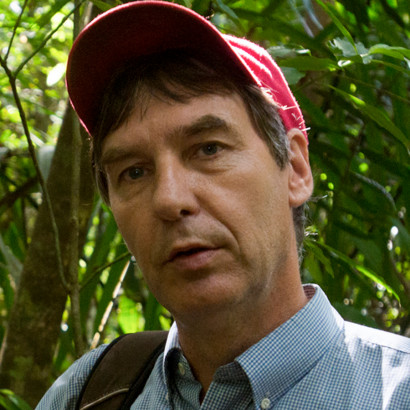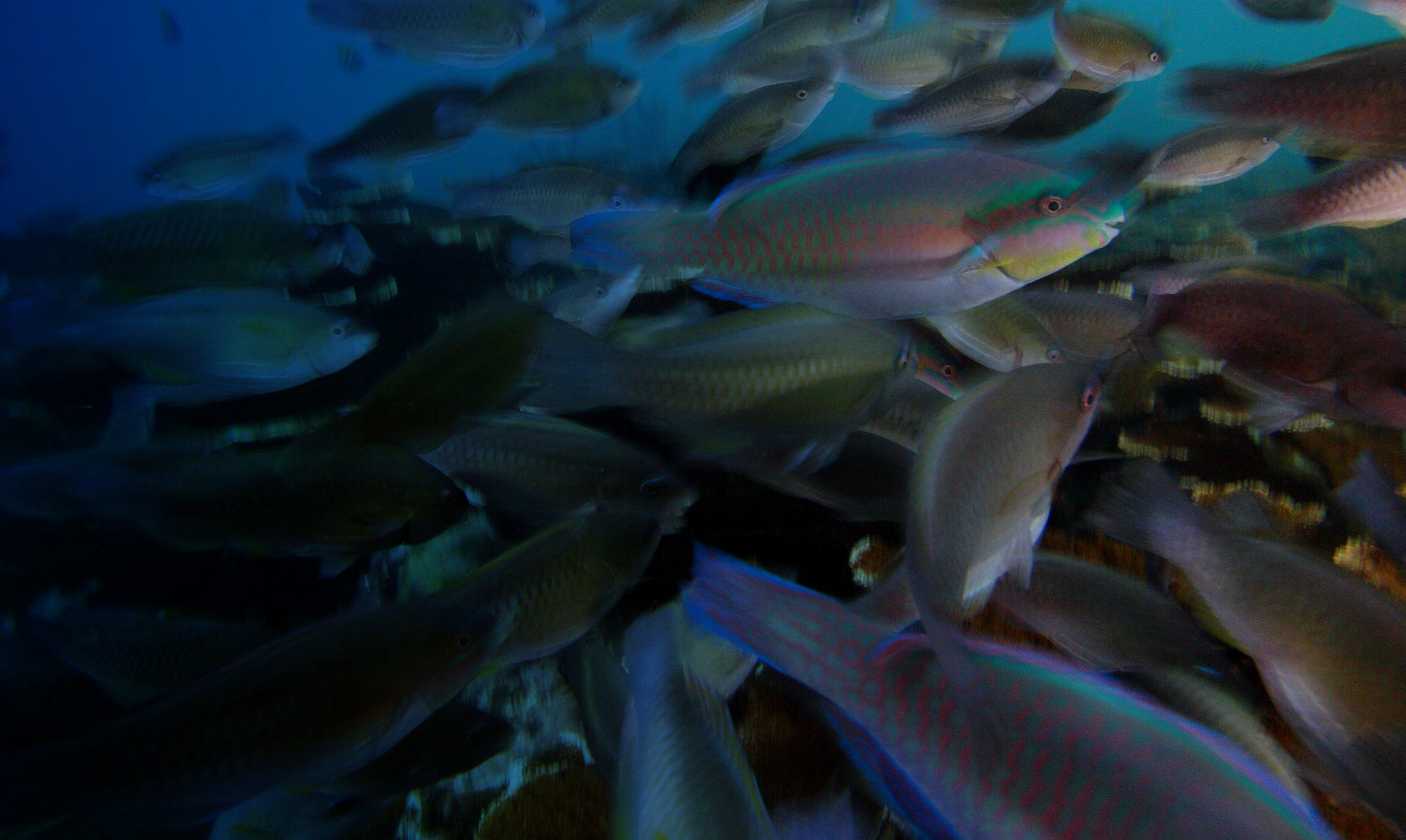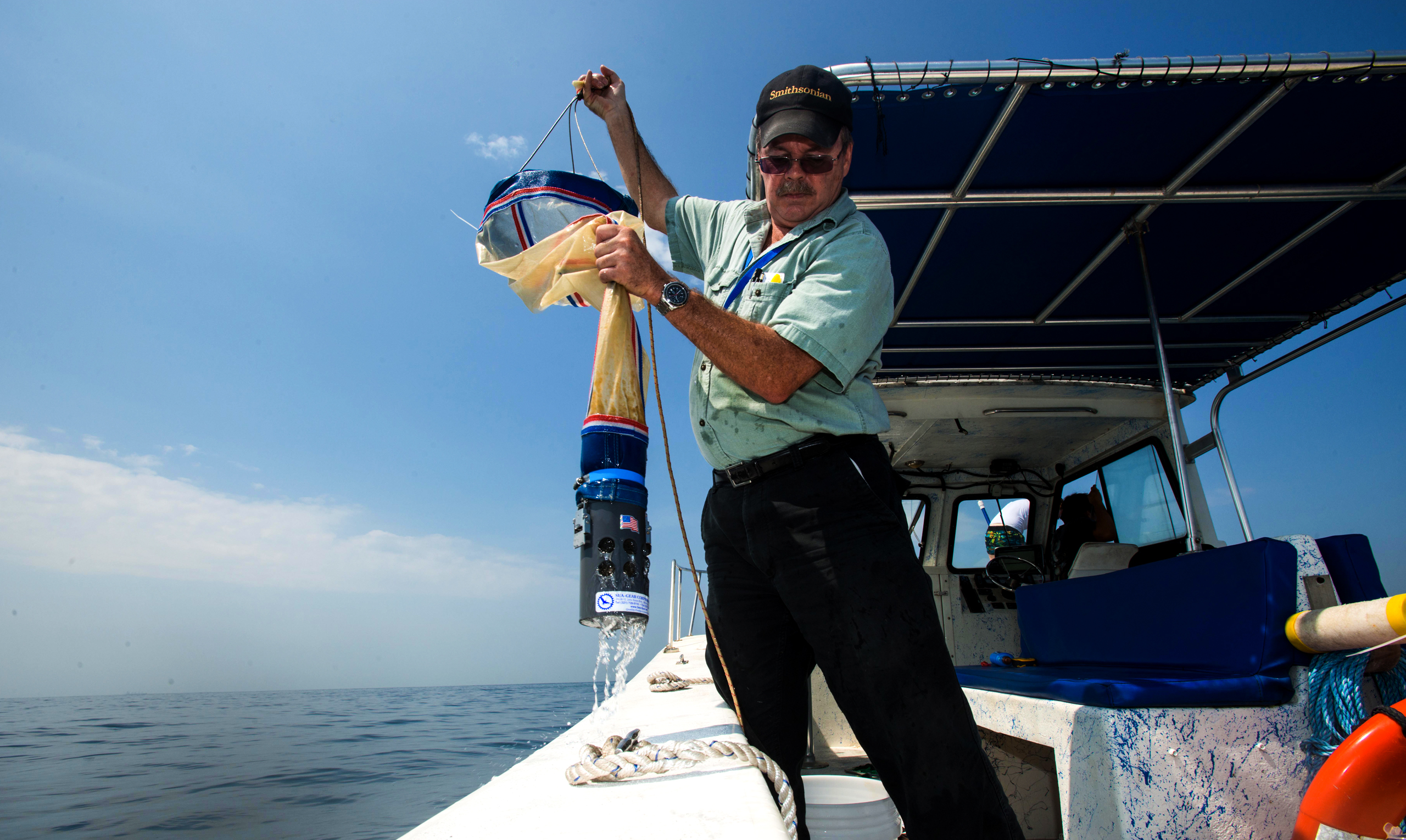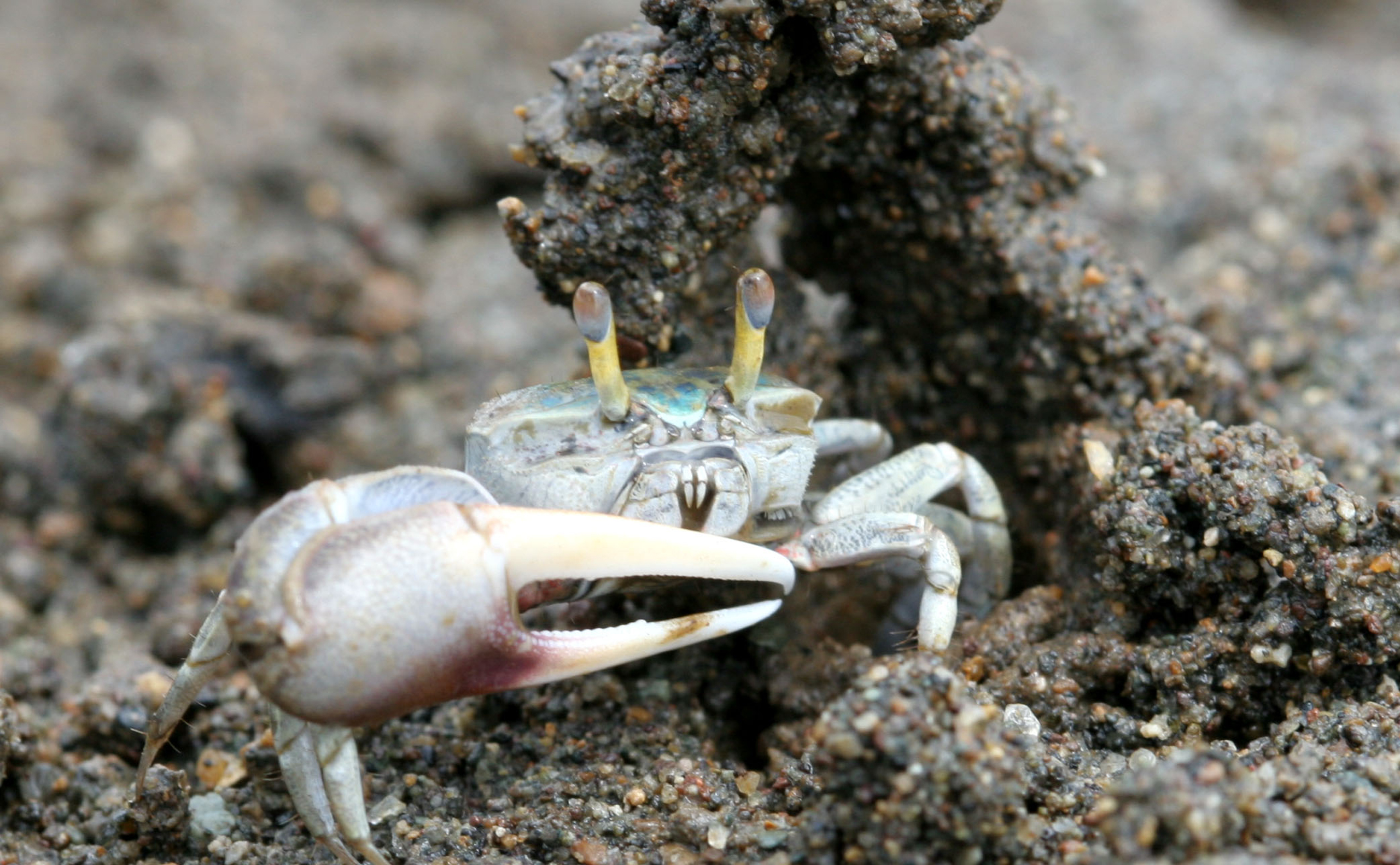Bonadies, E., Lamarre, G.P.A., Souto-Vilarós, D., Pardikes, N.A., Ramírez Silva, J.A., Perez, F., Bobadilla, R., Lopez, Y. & Basset, Y. 2024. Population trends of insect pollinators in a species-rich tropical rainforest: stable trends but contrasting patterns across taxa. Biology Letters, in press.
Tsang, T.P.N., De Santis, A.A.A., Armas-Quiñonez, G., Ascher, J.S., Ávila-Gómez, E.S., Báldi, A., Ballare, K.M., Balzan, M.V., Banaszak-Cibicka, W., Bänsch, S., Basset, Y., …, & Bonebrake, T.C. 2024. Land use change consistently reduces α but not β and γ diversity of bees. Global Change Biology, in press.
Leponce, M., Basset, Y., Aristizábal-Botero, Á., Baïben, N., Barbut, J., Buyck, B., Butterill, P., Calders, K., Cárdenas, G., Carrias, J.-F., Catchpole, D., D’hont, B., Delabie, J., Drescher, J., Ertz, D., Heughebaert, A., Hofstetter, V., Leroy, C., Melki, F., Michaux, J., Neita-Moreno, J.C., Poirier, E., Rougerie, R., Rouhan, G., Rufray, V., Scheu, S., Schmidl, J., Vanderpoorten, A., Villemant, C., Youdjou, N. & Pascal, O. 2024. Unveiling the above-ground eukaryotic diversity supported by individual large old trees: the “Life on Trees” integrative protocol. Frontiers in Forests and Global Change, 7, 1425492.
Jain, A., Cunha, F., Bunsen, M.J., Cañas, J.S., Pasi, L., Pinoy, N., Helsing, F., Russo, J., Botham, M., Sabourin, M., Fréchette, J., Anctil, A., Lopez, Y., Navarro, E., Perez Pimentel, F., Zamora, A.C., Ramirez Silva, J.A., Gagnon, J., August, T., Bjerge, K., Gomez Segura, A., Bélisle, M., Basset, Y., McFarland, K.P., Roy, D., Høye, T.T., Larrivée, M., Rolnick, D. 2024. Insect identification in the wild: The AMI dataset. Proceedings of the European Conference on Computer Vision, Milano, 2024, in press.
Souto-Vilarós, D., Basset, Y., Blažek, P., Laird-Hopkins, B., Segar, S.T., Navarro-Valencia, E., Cecilia Zamora, A., Campusano, Y., Čtvrtečka, R., Savage, A.F., Perez, F., Lopez, Y., Bobadilla, R., Ramírez Silva, J.A. & Lamarre, G.P.A. 2024. Illuminating arthropod diversity in a tropical forest: Assessing biodiversity by automatic light trapping and DNA metabarcoding. Environmental DNA, DOI: 10.1002/edn3.540
Segar, S.T., Re Jorge, L., Nicholls, L., Basset, Y., Rota, J., Kaman, O., Sisol, M., Gewa, B., Dahl, C., Butterill, P., Mezzomo, P., Miller, S.E., Weiblen, G., Salminen, J.-P., Novotny, V. & Volf, M. 2024. Species swarms and their caterpillar colonisers: phylogeny and polyphenols determine host plant specificity in New Guinean Lepidoptera. Frontiers in Ecology and Evolution, 11, 1308608.
August, T., Basset, Y., Boislard, T., Gomez-Segura, A., Høye, T. T., … & Roy, D. B. 2023. Automated monitoring of biodiversity in the tropics: A pilot study at Barro Colorado Island (1.0) [Data set]. Zenodo. https://doi.org/10.5281/zenodo.7598393
Ashe-Jepson, E., Arizala Cobo, S., Basset, Y., Bladon, A.J., Kleckova, I., Laird-Hopkins, B.C., Mcfarlane, A., Sam, K., Savage, A.F., Zamora, A.C., Turner, E.C. & Lamarre, G.P.A. 2023. Tropical butterflies use thermal buffering and thermal tolerance as alternative strategies to cope with temperature increase. Journal of Animal Ecology, doi.org/10.1111/1365-2656.13970.
Laird-Hopkins, B. C, Ashe-Jepson, E., Basset, Y., Cobo, S. A., Eberhardt, L., Freiberga, I., Hellon, J., Hitchcock, G.W., Kleckova, I., Linke, D., Lamarre, G.P.A., McFarlane, A., Savage, A.F., Turner, E.C., Zamora, A.C., Sam, K. & Bladon, A. J. 2023. Thermoregulatory ability and mechanism do not differ consistently between neotropical and temperate butterflies. Global Change Biology, 29, 4180-4192.
Basset, Y., Butterill, P.T., Donoso, D.A., Lamarre, G.P.A., Souto-Vilaros, D., Perez, F., Bobadilla, R., Lopez, Y., Ramírez Silva, J.A. & Barrios, H. 2023. Abundance, occurrence and time series: long-term monitoring of social insects in a tropical rainforest. Ecological Indicators, 150, 110243.
Harvey, J.A., Tougeron, K., Gols, R., …, Basset, Y., … & Chown, S.L. 2022. Scientists’ warning on climate change and insects. Ecological Monographs, in press.
Basset, Y., Blažek, P., Souto-Vilarós, D., Vargas, G., Ramírez Silva, J.A., Barrios, H., Perez, F., Bobadilla, R., Lopez, Y., Ctvrtecka, R., Šípek, P., Solís, A., Segar, S.T. & Lamarre, G.P.A. 2022. Towards a functional classification of poorly known tropical insects: The case of rhinoceros beetles (Coleoptera, Dynastinae) in Panama. Insect Conservation and Diversity, in press.
Basset, Y., Hajibabaei, M., Wright, M.T.G., Castillo, A.M., Donoso, D.A., Segar, S.T., Souto‑Vilarós, D. Soliman, D.Y., Roslin, T., Smith, M.A., Lamarre, G.P.A., De León, L.F., Decaëns, T., Palacios‑Vargas, J.G., Castaño‑Meneses, G., Scheffrahn, R.H., Rivera, M., Perez, F., Bobadilla, R., Lopez, Y., Ramirez Silva, J.A., Montejo Cruz, M., Arango Galván, A. & Barrios, H. (2022). Comparison of traditional and DNA metabarcoding samples for monitoring tropical soil arthropods (Formicidae, Collembola and Isoptera). Scientific Reports, 12, 10762. https://doi.org/10.1038/s41598-022-14915-2
Donoso, D.A., Basset, Y., Shik, J.Z., Forrister, D.L., Uquillas, A., Salazar Méndez , Y., Arizala, S., Polanco, P., Beckett, S., Dominguez G., D. & Barrios, H. 2022. Male ant reproductive investment in a seasonal wet tropical forest: consequences of future climate change. PLOs One, 17, e0266222.
Lamarre, G.P.A., Pardikes, N.A., Segar, S., Hackforth, C.N., Laguerre, M., Vincent, B., Lopez, Y., Perez, F., Bobadilla, R., Ramírez Silva, J.A., Basset, Y. 2022. More winners than losers over 12 years of monitoring tiger moths (Erebidae: Arctiinae) on Barro Colorado Island, Panama. Biology Letters, 18, 20210519.
Roubik, D.W., Basset, Y., Lopez, Y., Bobadilla, R., Perez, F. & Ramírez Silva, J.A. 2021. Long-term (1979-2019) dynamics of protected orchid bees in Panama. Conservation Science and Practice, 3, e543.
Basset, Y., Miller, S.E., Gripenberg, S., Ctvrtecka, R., Dahl, C., Leather, S.R. & Didham, R.K. 2019. An entomocentric view of the Janzen-Connell hypothesis. Insect Conservation and Diversity, 12, 1-8.
Basset, Y., Dahl, C., Ctvrtecka, R., Gripenberg, S., Lewis, O.T., Segar, S.T., Klimes, P., Barrios, H., Brown, J.W., Bunyavejchewin, S., Butcher, B.A., Cognato, A.I., Davies, S.J., Kaman, O., Knizek, M., Miller, S.E., Morse, G.E., Novotny, V., Pongpattananurak, N., Pramual, P., Quicke, D.L.J., Robbins, R.K., Sakchoowong, W., Schutze, M., Vesterinen, E.J., Wang, W.-z., Wang, Y.-y., Weiblen, G. & Wright, S.J. 2018. A cross-continental comparison of assemblages of seed- and fruit-feeding insects in tropical rainforests: faunal composition and rates of attack. Journal of Biogeography, 45, 1395-1407.
Didham, R.K., Leather, S.R. Basset, Y. 2017. Don’t be a zero-sum reviewer. Insect Conservation and Diversity, 10, 1-4.
Lucas, M., Forero, D. & Basset, Y. 2016. Diversity and recent population trends of assassin bugs (Hemiptera: Reduviidae) on Barro Colorado Island, Panama. Insect Conservation and Diversity, 9, 546-558.
Basset, Y., Cizek, L., Cuénoud, P., Didham, R.K., Novotny, V., Ødegaard, F., Roslin, T., Tishechkin, A.K., Schmidl, J., Winchester, N.N., Roubik, D.W., Aberlenc, H.-P., Bail, J., Barrios, H., Bridle, J.R., Castaño-Meneses, G., Corbara, B., Curletti, G., da Rocha, W.D., De Bakker, D., Delabie, J.H.C., Dejean, A., Fagan, L.L., Floren, A., Kitching, R.L., Medianero, E., de Oliveira; E.G., Orivel, J., Pollet, M., Rapp, M., Ribeiro, S.P., Roisin, Y., Schmidt, J.B., Sørensen, L., Lewinsohn, T.M., Leponce, M. 2015. Arthropod distribution in a tropical rainforest: tackling a four dimensional puzzle. PLoS ONE 10(12): e0144110. doi:10.1371/journal.pone.0144110
Basset, Y., Barrios, H., Segar, S., Srygley, R.B., Aiello, A., Warren, A.D., Delgado, F., Coronado, J., Lezcano, J., Arizala, S., Rivera, M., Perez, F., Bobadilla, R., Lopez, Y. & Ramirez, J.A. 2015. The butterflies of Barro Colorado Island, Panama: local extinction since the 1930s. PLoS ONE, 10, e0136623. doi:10.1371/journal.pone.0136623
Fayle, T.M., Turner, E.C., Basset, Y., Ewers, R.M., Reynolds, G. & Novotny, V. 2015. Whole-ecosystem experimental manipulations of tropical forests. Trends in Ecology and Evolution, 30, 334-346.
Basset, Y., Eastwood, R., Sam, L., Lohman, D.J., Novotny, V., Treuer, T., Miller, S.E., Weiblen, G.D., Pierce, N.E., Bunyavejchewin, S., Sakchoowong, W., Kongnoo, P. & Osorio-Arenas, M.A. 2013. Cross-continental comparisons of butterfly assemblages in rainforests: implications for biological monitoring. Insect Conservation and Diversity, 6, 223-233.
Basset, Y., Cizek, L., Cuénoud, P., Didham, R.K., Guilhaumon, F., Missa, O., Novotny, V., Ødegaard, F., Roslin, T., Schmidl, J., Tishechkin, A.K., Winchester, N.N., Roubik,D.W., Aberlenc, H.-P., Bail, J., Barrios, H., Bridle, J.R., Castaño-Meneses, G., Corbara, B., Curletti, G., Duarte da Rocha, W., De Bakker,D., Delabie, J.H.C., Dejean, A., Fagan, L.L., Floren, A., Kitching, R.L., Medianero, E., Miller, S.E., de Oliveira, E.G., Orivel, J., Pollet, M., Rapp, M., Ribeiro, S.P., Roisin, Y., Schmidt, J.B., Sørensen, L., & Leponce, M. 2012. Arthropod diversity in a tropical forest. Science, 338, 1481-1484.
Basset, Y., Missa, O., Alonso A., Miller, S.E., Curletti, G., De Meyer, M., Eardley, C., Lewis, O.T., Mansell, M.W., Novotny, V. & Wagner, T. 2008. Changes in arthropod assemblages along a wide gradient of disturbance in Gabon. Conservation Biology, 22, 1552-1563.
Basset, Y., Novotny, V., Miller, S.E. & Kitching, R.L. (eds) 2003. Arthropods of Tropical Forests. Spatio-temporal Dynamics and Resource Use in the Canopy. Cambridge University Press, xvi + 474 pp.
Novotny, V., Basset, Y., Miller, S.E., Weiblen, G.D., Bremer, B., Cizek, L. & Drozd, P. 2002. Low host specificity of herbivorous insects in a tropical forest. Nature 416, 841-844.
Basset, Y., Miller, S.E., Gripenberg, S., Ctvrtecka, R., Dahl, C., Leather, S.R. & Didham, R.K. 2019. An entomocentric view of the Janzen-Connell hypothesis. Insect Conservation and Diversity, 12, 1-8.
Basset, Y., Dahl, C., Ctvrtecka, R., Gripenberg, S., Lewis, O.T., Segar, S.T., Klimes, P., Barrios, H., Brown, J.W., Bunyavejchewin, S., Butcher, B.A., Cognato, A.I., Davies, S.J., Kaman, O., Knizek, M., Miller, S.E., Morse, G.E., Novotny, V., Pongpattananurak, N., Pramual, P., Quicke, D.L.J., Robbins, R.K., Sakchoowong, W., Schutze, M., Vesterinen, E.J., Wang, W.-z., Wang, Y.-y., Weiblen, G. & Wright, S.J. 2018. A cross-continental comparison of assemblages of seed- and fruit-feeding insects in tropical rainforests: faunal composition and rates of attack. Journal of Biogeography, 45, 1395-1407.
 smithsonian-cyan
Aaron O'Dea
smithsonian-cyan
Aaron O'Dea












